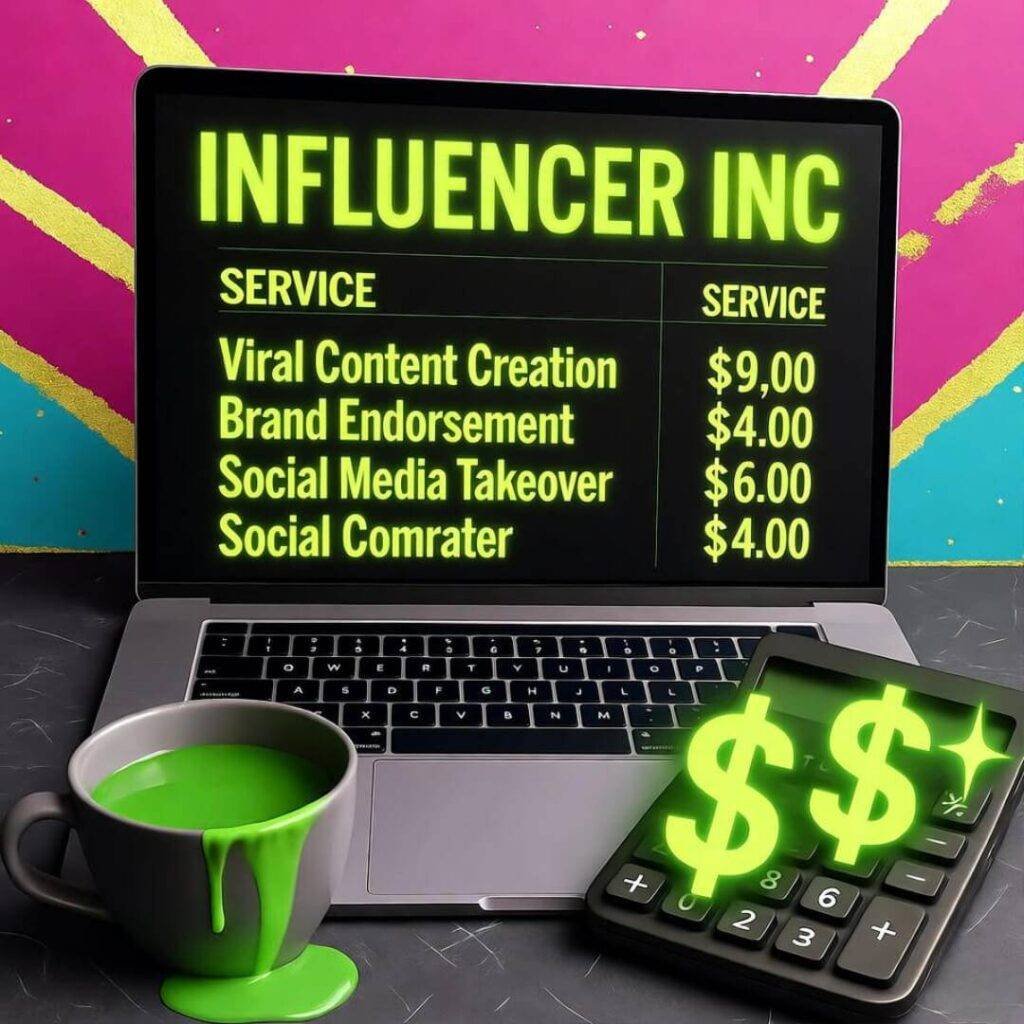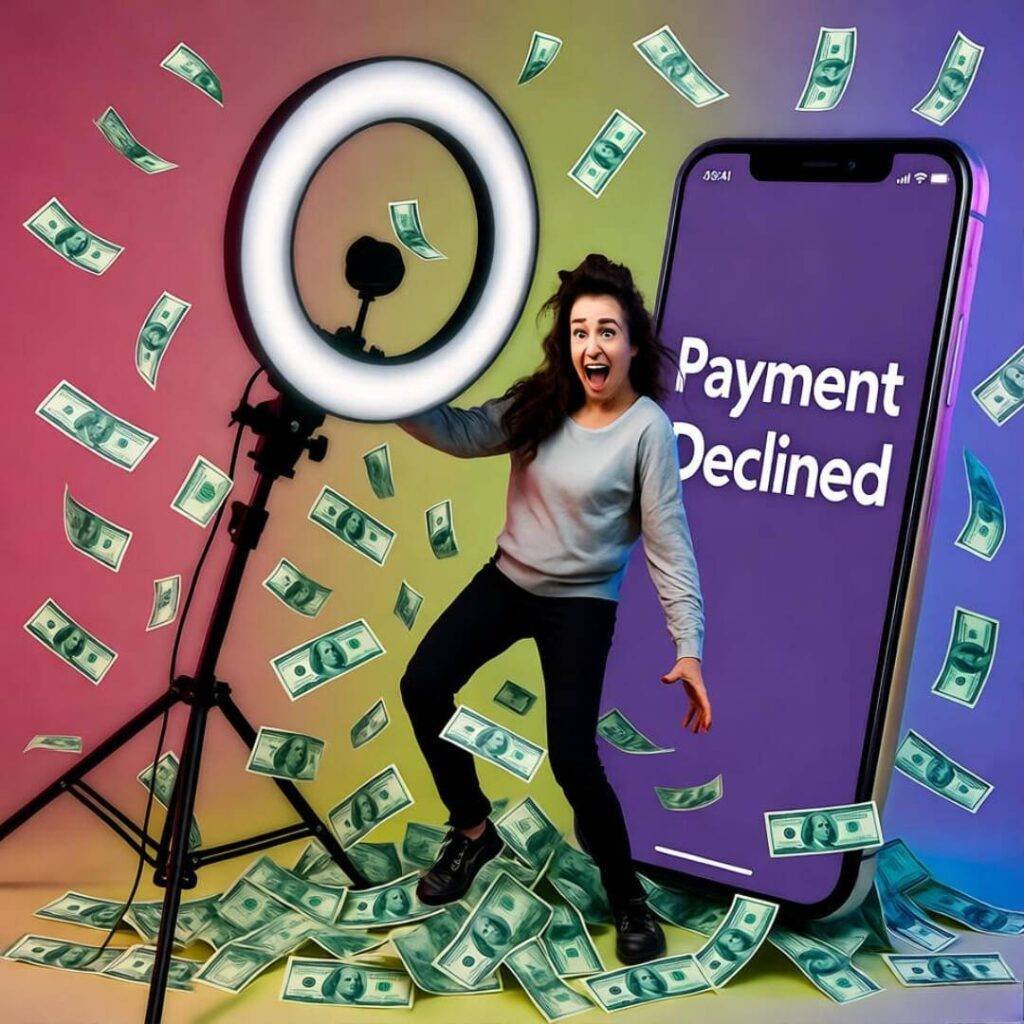Influencer marketing costs are legit driving me up the wall as I sit in this overpriced Brooklyn café, the air stinking of burnt coffee and hipster attitude. I’m chomping on a $13 bagel—because apparently I hate money—and scrolling X, where some dude with 8K followers wants $450 for a single Story. Are you serious? My bank account’s giving me the stink-eye, but I can’t stop. I’ve been down this road, trying to figure out what brands are dropping on that perfect TikTok dance or Insta aesthetic. It’s 2025, and influencer marketing costs are a total hot mess—part hustle, part scam, part “why am I even here?” Lemme spill my tea, with some super cringey stories, on what I’ve learned while completely screwing this up.
My Epic Faceplant with Influencer Marketing Costs
Okay, true story: I totally tanked my first shot at hiring an influencer. Picture me last summer, stuck in my sweaty Queens apartment, the AC wheezing like it’s got a cold, surrounded by dead plants and a pile of greasy takeout boxes I swore I’d recycle. I thought I was some marketing hotshot, DMing this “lifestyle” chick with 12K followers for my buddy’s candle side gig. I offered $100 for a post, feeling like a boss. She laughed in her reply and hit me with, “My rate’s $900, hon.” I was shook. My cat, Muffin, gave me this look like, “You’re a clown.” That’s when it hit me: influencer marketing costs ain’t just numbers—they’re a vibe, a power trip, and a punch to the ego.
Here’s what I’ve scraped together since:
- Nano-influencers (1K–10K followers): These folks charge $50–$300 a post. Like that X account obsessing over artisanal soaps.
- Micro-influencers (10K–50K): Think $300–$1,500 a post. My candle fiasco lives here.
- Mid-tier influencers (50K–500K): $1,500–$12,000 a post. I nearly spit out my bagel.
- Macro or mega-influencers (500K+): $12,000 to, like, a million bucks for a campaign. Saw a celeb on X flexing a $700k reel deal. Insane.

Why Are Influencer Marketing Costs So Nuts in 2025?
Why are influencer marketing costs making me wanna sell my old couch? I’m in this café, some whiny indie tune blaring, and I’m thinking it’s all about demand and clout-chasing. Brands are thirsty for that “real” vibe, even if it’s fake as hell. I saw on Influencer Marketing Hub that the industry’s hitting $22 billion in 2025. Brands are throwing cash to cut through the algorithm swamp. But it’s not just followers—engagement, platform, and the influencer’s whole “aesthetic” (ugh, I hate that word) matter big time.
Here’s what I’ve noticed:
- Platform vibes: TikTok and Reels cost more ‘cause short videos rule. A TikTok post can cost 25% more than an Insta pic.
- Niche power: Fitness influencers are banking compared to, like, cat meme accounts. Saw a gym bro on X bragging about a $6k deal for a 15-second clip.
- Exclusivity BS: Some brands pay extra to keep influencers from shilling for rivals. I tried this once and got ghosted when I couldn’t afford the “no-compete” fee.
The Sneaky Influencer Marketing Costs That Burned Me
Here’s where I really screwed up: I thought influencer marketing costs were just the sticker price. Ha! I was eating dollar-store ramen in my apartment, staring at my sad bank account, when it hit me—there’s hidden crap like contract fees, editing costs, or even travel if you want an influencer at your event. I once got slapped with a $200 “creative fee” on top of a $700 post ‘cause I didn’t read the fine print. My wallet’s still giving me the silent treatment.
Pro tip: always ask for a full breakdown. I found a dope checklist on Hootsuite’s blog that’s saved me from more dumb moves.

How to Deal with Influencer Marketing Costs Without Losing It
So, how do you handle influencer marketing costs without crying into your latte? I’m no pro—obviously—but I’ve got some thoughts from my own trainwrecks. First, set a budget and stick to it. I blew $800 extra once ‘cause I got FOMO watching a competitor’s campaign go viral. Second, focus on engagement, not just followers. A Forbes post said nano-influencers can have 10x the engagement of big names for way less cash. Blew my mind.
My 2025 survival tips:
- Go small: Nano or micro-influencers are cheaper and feel more real.
- Haggle (nicely): I lowballed once and got blocked. Offer fair rates, ask for deals.
- Track ROI: Use tools like Later to see if it’s worth it. I didn’t, and I’m still salty.
- Be clear: Spell out what you want—posts, stories, reels—to avoid surprise fees.
The Weirdest Thing About Influencer Marketing Costs
Here’s the wildest part: cheap influencers can cost you more. Sounds nuts, right? I was at this dive bar in the East Village last week, sipping a $10 IPA, overhearing some startup bros whining about their failed influencer campaign. They went cheap, hired a bunch of low-tier influencers, and got nada ‘cause the content was trash. Quality over quantity, y’all. Spending more on someone with a legit audience can save you from throwing cash into a black hole.

Wrapping Up My Rant on Influencer Marketing Costs
So, yeah, influencer marketing costs in 2025 are a total mess. I’m sitting here, staring at my empty coffee cup, crumbs all over my shirt, realizing I’ve spent way too much time (and money) trying to figure this out. It’s chaotic, it’s pricey, and it’s humbling, but it’s also kinda fun when you don’t totally blow it. My advice? Do your research, laugh at your screw-ups, and don’t be me, crying over a $200 “creative fee.” Wanna nerd out more? Check Sprout Social’s 2025 guide for solid tips, and hit me up with your own influencer horror stories—I’m dying to hear ‘em.












































